
By Ilma Hackett – Balnarring and District Historical Society
They came from the orchards on the hills and valleys of Mornington Peninsula yesterday to witness the official opening of the railway extension of 10 miles from Bittern to Red Hill.” So ran the opening sentence of a news item in the Frankston and Somerville Standard written on December 2, 1921. The writer estimated 700 people, some put the figure at closer to 1,000, crowded at the new Red Hill railway terminal on that hot summer morning to greet the very first train to arrive from Melbourne. Excitement ran high. It was a long awaited event.
The Railway’s Background
The railway had reached Hastings and Stony Point in 1889. This extension from Frankston had been built mainly for military purposes. Its construction followed the installation of a telegraph line at Sandy Point to relay news of Russian warships in Western Port Bay where, as one reader of The Argus in May 1875 argued, once alerted by telegraph and with a railway in place “a force might be sent down in time to dispute an attempt at landing.” Even before the line was completed there had been a cry to extend it further, to bring the line through to Red Hill and “put life into the district”. The fruit-growers in particular called for a faster and more efficient means to get their produce to city markets. The roads at the time, more often than not, were impassable. It took as long as ten hours to get fruit to the Bittern railhead, fourteen to Mornington. A rail line would be a real boon. Not all agreed. In a letter to the editor in 1915 one person wrote: “ . . . as a means of transport of beetroot from Bitten and red strawberries from Red Hill we doubt its usefulness”.
Most though were in favour and several routes were considered. One was a coastal route through Shoreham to Flinders. A second was a link from Mornington across to Red Hill or from Baxter junction along the centre of the peninsula to Red Hill. The third, and chosen, route went from Bittern through Balnarring and Merricks to Red Hill (with the possibility of extending it further south at a future date).

Work begins
In1915 a Railway Act was passed for the construction of the line to go ahead but because it was war time, the project was put on hold until peace should return. Finally in 1919 land was acquisitioned. The official ceremony of turning the first sod was performed by the Minister of Railways in 1920 opposite the general store in Balnarring. This was followed by a banquet held at the Balnarring Hall.
The total length of the line was not quite ten miles (16 kms). The topography between Bittern and Merricks is fairly flat, the land rising from 13 metres above sea level to 41.5 metres at Merricks but Red Hill sits at 192.5 metres, a relatively short and steep climb. The maximum gradient was1 in 30 and the line necessitated sharp curves with a radius of about 240 metres. The line was standard gauge, 5 feet 3 inches (1.6 metres). Hann’s Creek between Balnarring and Merricks presented an obstacle and a wooden trestle bridge was designed to take the trains across.

The Bittern to Red Hill Railway Construction Trust made up of Shire councillors was constituted in 1920 and a rate, 1/- in the £1, was levied to supplement the capital expenditure. The estimated cost was approximately £44,000. The actual cost was closer to £76,000.
Donald Ross Mackay was given the contract for the work and he engaged sixty workers and six horse teams with scoops. The workmen used spades and wheelbarrows to build the line on the relatively level land and the horse teams were brought into use when the line turned inland to climb to Red Hill.
Ern Stone, owner of the Balnarring general store, had the contract to supply the necessary feed for the horse teams. There was some uneasiness in the area over the influx of navvies to work on the line and the Balnarring Progress Association asked for an additional police presence. However this wasn’t seen to be necessary and “didn’t warrant such action”.
Work began and the total section of track from Bittern to Merricks was completed in about six months. The more challenging hill section was ready towards the end of the following year.
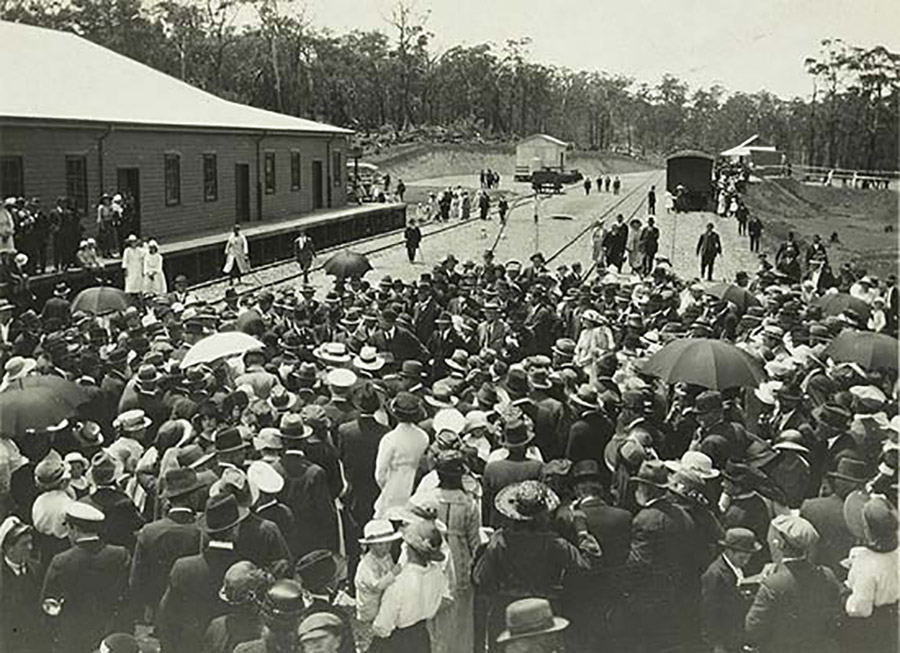
The line is opened
The official opening of the line took place on 2 December, 1921.
Elsie Cole from ‘Larnoo’ at Merricks described the events of the day in a letter to her sister-in-law, Ruby Cole, who was unable to attend. Elsie wrote that all morning there was “a continuous stream of motors, drays, buggies, jinkers” towards the Red Hill Station grounds. The crowd brought picnic lunches with them and they were entertained by the naval band as they waited for the train to appear.
It was late arriving. A plague of caterpillars across the track caused the wheels to slip as the train tackled the steep gradient towards the Red Hill Station.
The train was pulled by the Commissioner’s engine, a Dd980, driven by Mr Carter.
It was decorated with flags and bedecked with garlands of pink roses placed there by the Stone family at Balnarring. One long state carriage carried the dignitaries and another carriage was packed with people all “hanging out of windows and on the footboard, waving and cheering”. The excursion fare from Melbourne was six shillings and eleven pence but the Cole family members had ridden for free as there was not yet a station master at Merricks to issue tickets.
The official ceremony began with the cutting of a ribbon. The oldest resident of the district, Mary Haig, 92 years, was assisted by the youngest pupil at the Red Hill school, five-year-old Mary Forrest. Each held the end of the ribbon that was cut by the Minister of Transport, Mr Barnes, who used a special silver penknife. This officially opened the line. Speeches were given, then the official party attended a luncheon during which another twenty-four speeches were given. The unfortunate Dave Buckley, a local key figure who was supposed to give a speech, wasn’t able to attend because of lumbago.
The crowd meantime picnicked, listened to the music, and socialised. The train made a run to Merricks and back on a joy ride for the children. Mrs Cole describes how one young father climbed aboard with his baby then heard someone say the train was bound for Melbourne. As it began to roll he “made a flying leap off the train with the baby” much to the consternation of his wife.
The day ended “with a tremendous thunder and hail storm”.
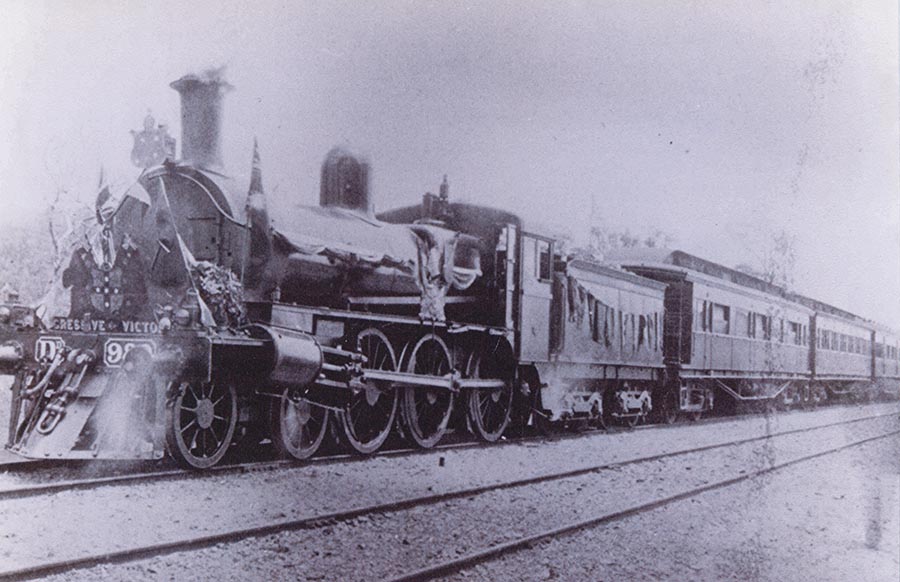
Celebrations went on into the night at a social held at Balnarring where things ended with a “bit of a fight”, as Mrs Cole commented, due to “too much beer, I believe” being consumed. The Red Hill people celebrated at a dance held in the new coolstore, hopefully with a little more decorum.
The Early Years
At first, trains ran from Melbourne to Red Hill on Monday, Wednesday and Friday and from Red HiIl to Melbourne on Tuesday, Thursday and Saturday. The train carried both passengers and goods. Special trains were also run for such events as the Dromana races or the Red Hill Show. A rail motor for passengers was trialled for a couple of years in the mid 1920s, but it had problems with the steep gradient and the service discontinued. Holiday-makers took advantage of the line to reach the beaches at Somers, Balnarring and Merricks and for those who came for a few weeks, a train outing was something to look forward to. The run to Red Hill was a picturesque ride offering views of the sea along most of the line and a constant change of scenery at every turn through the hills.

The line certainly made it easier to move goods in and out of the area. Fertilizer, bran, pollard, chaff, cement, hardware and materials for construction such as poles and pipes were brought to stations along the route. Fruit, strawberries, potatoes, onions, timber, livestock (both sheep and cattle) and firewood, huge amounts of firewood, left for Melbourne markets.
Close to the stations at Merricks and Balnarring new businesses were set up. A general store was built at Merricks while at Balnarring a blacksmith’s was relocated closer to the station and two of Ern Stone’s sons opened a garage and a hardware store near their father’s general store at the Balnarring junction. Land was subdivided and sold in anticipation of both residential and commercial growth.
Stations along the route
The far terminus was the Red Hill Station. Here there were station buildings, a station master’s residence, goods shed and platform, and sheep-loading pens and ramps. The ‘splendid’ coolstores drew Elsie Cole’s praises, “I had no idea they would be so big”, while the metalled surfaces of the approaches to the station itself and the stores drew further comment.
At the station there were two loop sidings and one dead-end siding near the turntable. There was also a dead-end siding near the coolstore. In 1921 one visitor described “quite a large settlement of homes surrounded by orchards” at Red Hill.
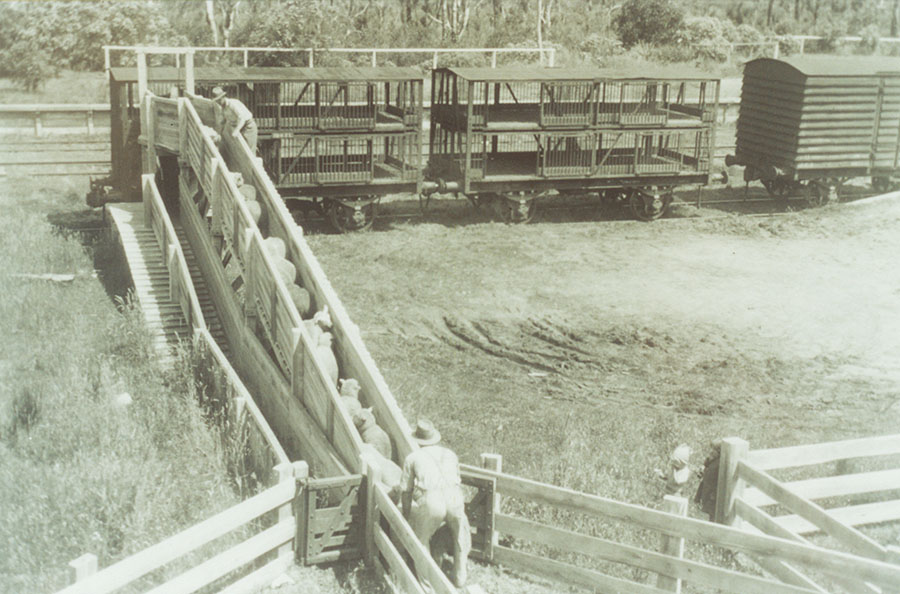
Not long after the line opened there was a push for further extensions; “it was never intended it stop at Red Hill”. Suggested destinations were Flinders, or Red Hill South, or Boneo, or Baldry’s Corner.
Corner. A route to Baldry’s Corner was surveyed. However road transport was making an impact and the planned extension never went ahead. It was abandoned in1927.
The Merricks Station had a caretaker’s residence in the early years of the railway, a goods shed standing on its own platform and a station building. The station building was a small shelter. There were combined stock-trucking yards where sheep sales were held and the animals were then moved away by rail. The Cole family who owned a large grazing property nearby sometimes had special trains for their sheep. After the line was dismantled the goods shed was moved to ‘Larnoo’, Cole property, where it served as a farm shed until fairly recently.
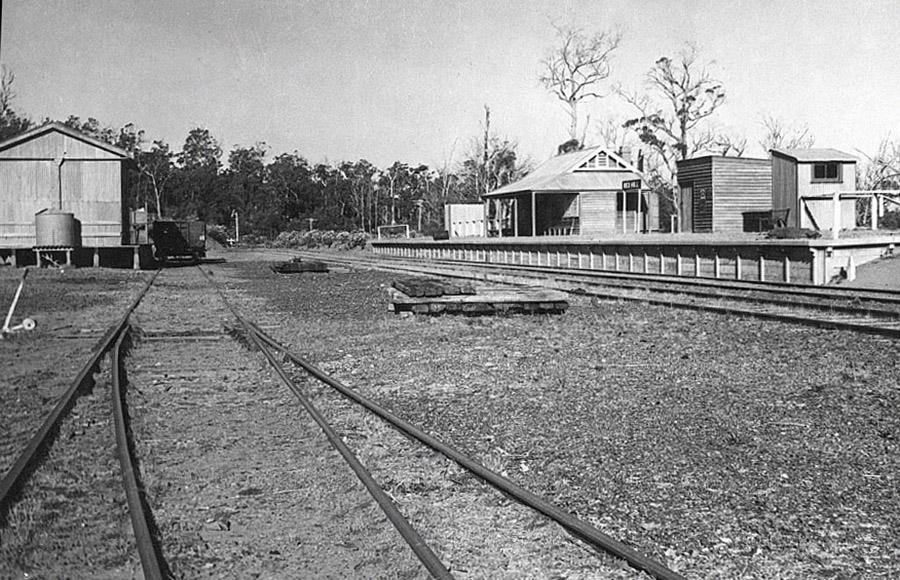
Balnarring Station was designated a ‘station NC’ (no-one in charge). In1928 a request from the Progress Association outlined a need for a caretaker to receive parcels, a platform scale, conveniences and the issue of seaside excursion tickets to Balnarring. The request wasn’t met. The station itself had a long ramp with two sheds on the platform. “One had sliding doors and was equipped with a battery-operated telephone with a line direct to the station master’s office in Bittern. The other was open on one side. It had posters on one wall showing the maximum weight and correct loading methods for each type of truck. Also fixed to the wall was a metal cylinder containing a red flag. To be used to stop train only!” (Jack Cavanagh)
There was also a goods platform eighteen metres long by five metres wide with a ramp at one end. Rail cars were off-shunted to the goods siding, a loop siding. The station yards had a loading ramp for sheep and cattle which was accessed from Grant’s Lane while the Council Depot stood at the west end of the railway yard.
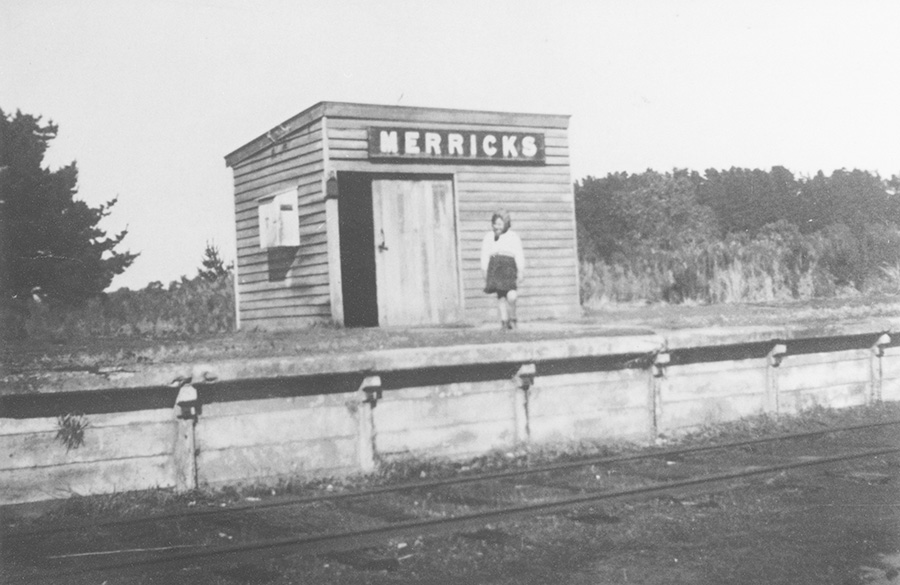
Jack Cavanagh, a school boy in the 1930s, loved to go to the station yards when he heard the sound of the train’s whistle. “Whenever possible, we would race down to the station to watch them as they shunted one or two trucks into the siding. The engineer would take his oil-can to the connecting-rod bearings, the fireman shovel in some coal, a blast from the whistle, a hiss of steam and off they would go, sometimes spinning the wheels. We then picked up the flattened pieces of copper-wire and nails we had placed on the rails, looked inside the trucks, fiddled with the brakes and headed for home”.
The frequency of the service was cut back in the ensuing years as the use of the railway fell away. The service became a weekly one, with a train running on a Monday. Passengers continued to enjoy an outing to Red Hill and a ride on the train was a highlight eagerly anticipated by many holiday-makers. This was a slow and leisurely ride particularly the hilly section after Merricks and there are a number of stories associated with the climb. It is said that members of the engine crew could hop down from the train to pick mushrooms beside the line as the engine made its way upwards and were able to climb back on board before the train went too far.

Closure
Ironically it was the railway that had introduced road freight trucks to connect with Bittern and as the roads improved users preferred to use road transport to the rail. The line ran at a loss for many years.
It was finally closed on July 1, 1953 and the dismantling of the line was authorised at the end of 1955. But a few trains did run before the line was taken up. Special trains brought children from the city to Somers to the Lord Somers Camp to enjoy holidays in a country and seaside environment. The final train, a picnic train organised by the Railways Historic Society, made a final run from Bittern to Balnarring and back in 1956.

The railway route today
Today, with a bit of sleuthing, you can find signs of the old railway line. It ran parallel to the Frankston-Flinders Road from Bittern to Balnarring and as you are driving towards Balnarring you can still see signs of the former rail embankments in properties on the left hand side of the road. Station Street in Balnarring is one clue. It led down to the station grounds on the opposite side of the road. From the station at Balnarring the line crossed the road leading to Balnarring Beach and Somers (considered a most dangerous intersection) before turning away from the road and heading across paddocks in the general direction of Merricks. Today, leading from Balnarring’s skate park and running towards the school, is a shallow cutting overshadowed by pine trees. This was the train’s route. It skirted the land where the school now stands and headed across paddocks towards the bridge over Hann’s Creek before turning again to cross the Frankston-Flinders Road and reach the Merricks Station.
The former Merricks Station grounds are now the Equestrian Centre and the platform here is still discernible as are some of the old rails.
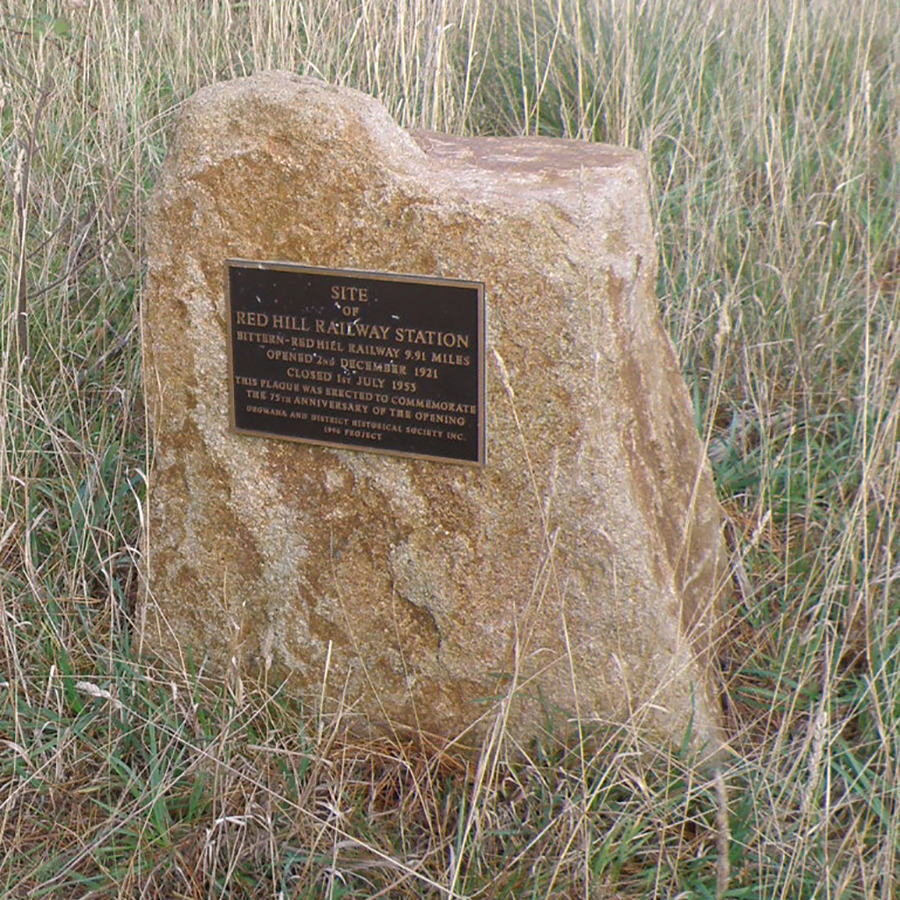
From Merricks there is a walking trail that follows the former route to Red Hill. It’s a pleasant walk that skirts vineyards and climbs through bushland as it nears Red Hill. Here the remains of the old 53 feet (16 metre) turntable can be traced out among the undergrowth and although the station has gone there is a marker that was erected on the line’s 75th Anniversary. Not far away Station Road angles to meet Red Hill Road. It leads towards the site of the former station. At the end of the walk heritage signs tell the story of the line, of the time when the long, drawn-out whistle of the steam train was a common sound in the district.
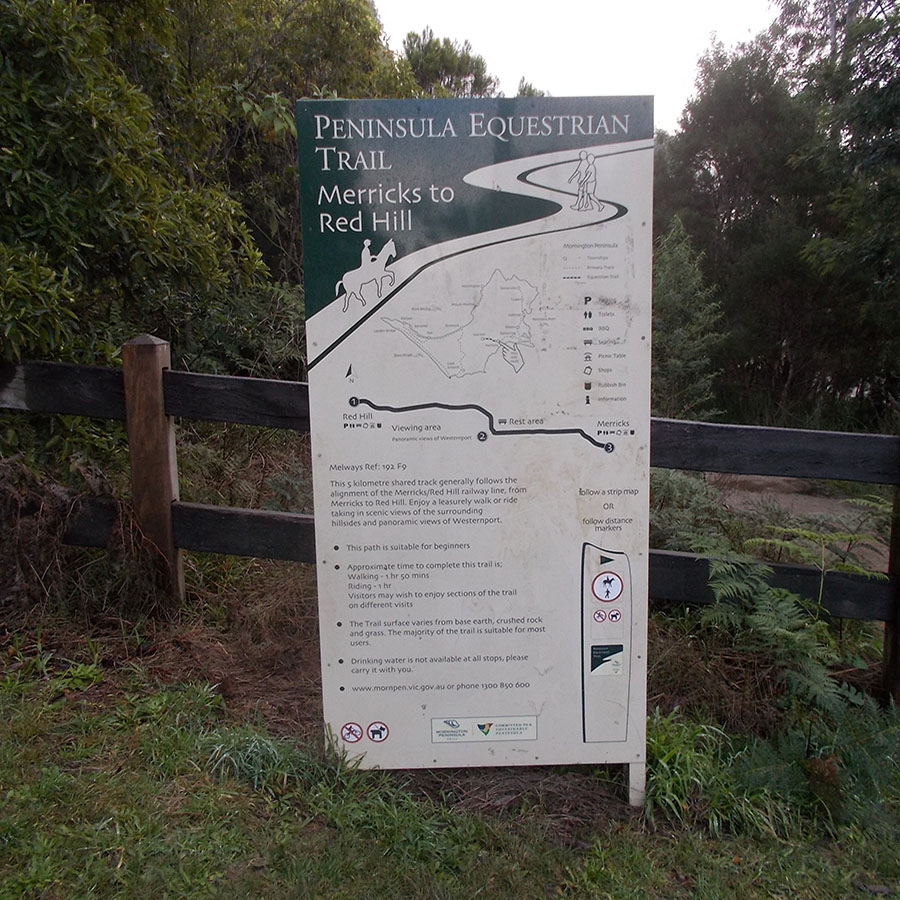
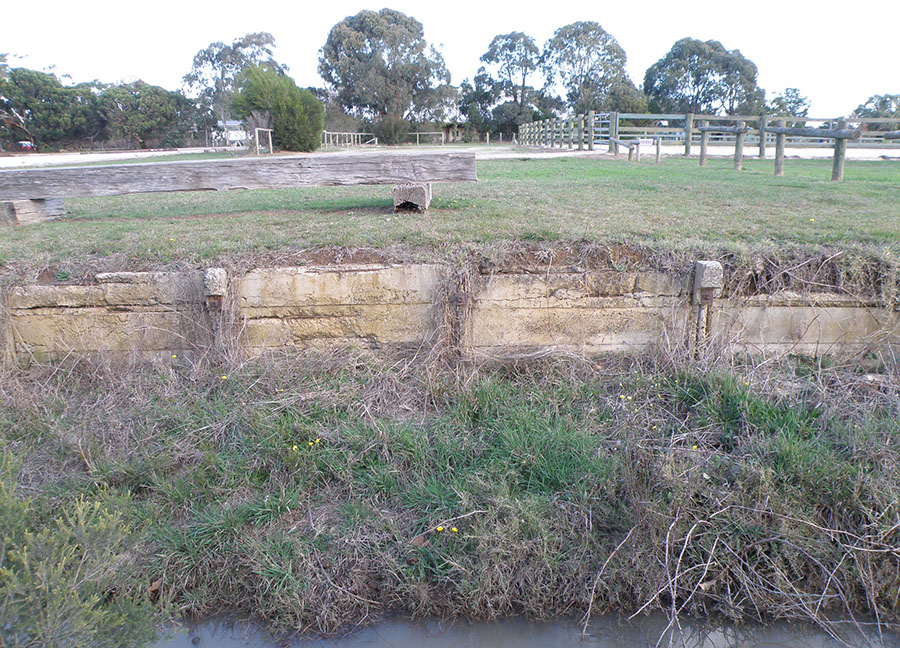
References:
Contemporary newspapers.
Source materials held by the Balnarring and District Historical Society.
“The Bittern-Red Hill Railway 1921 – 1953” by Keith Holmes.
Photographs:
These are from the Balnarring and District Historical Society collection and are reproduced with permission.





